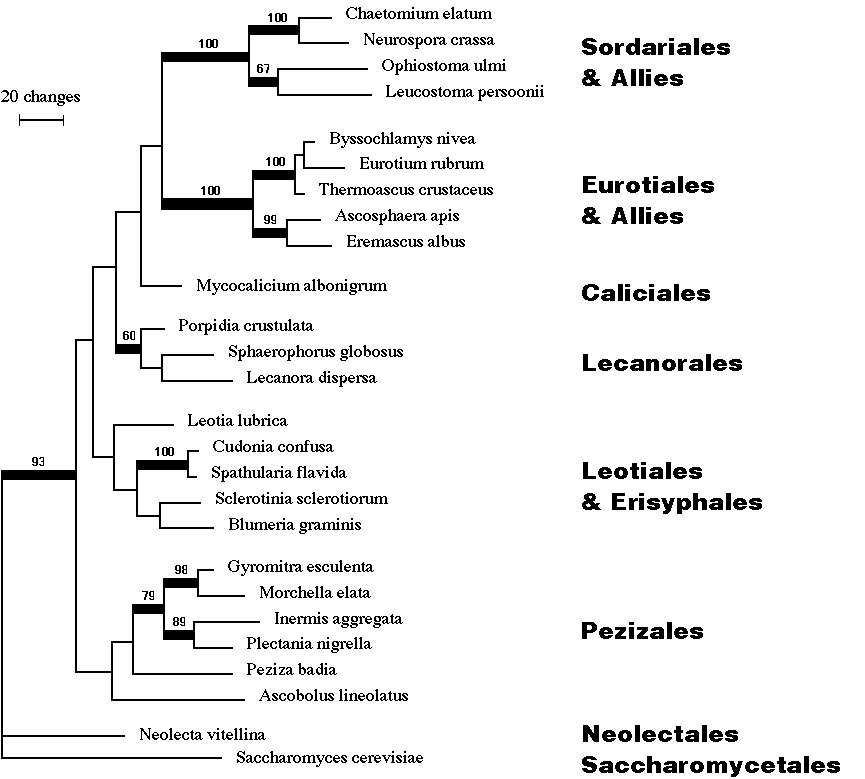Ascomycete Phylogram

This phylogram is based on parsimony analysis of nearly complete (ca. 1700 nt)
rDNA sequences. Bootstrap percentages of > 50 % (based on 500 bootstrap
replications) are shown over thickened branches. Distance is relative to
line length (scale on figure). This figure is adapted from: Gargas, A. &
Taylor, J.W. (1995). Phylogeny of discomycetes and early radiations of the
apothecial ascomycotina inferred from SSU rDNA sequence data. Exp. Mycol.
19: 7-15.
Ascomycete fruiting body evolution
Lichen-forming fungi in the orders Lecanorales and Caliciales were essential to understanding
relationships among the well-known
cup fungi in the orders Pezizales and Leotiales. The apothecial ascomycetes were
paraphyletic indicating that cups cannot be used as the defining character for
a monophyletic class Discomycetes. Interestingly, this hypothesis predicts that
the apothecial fungi gave rise to the perithecial fungi with flask-shaped fruiting
bodies (Sordariales, Ophiostomatales and allies), and to the cleistothecial fungi
with closed fruiting bodies (Eurotiales and allies). One surprising finding, in
collaboration with G. S. Saenz, was that the powdery mildews with forcible spore
ejection, and closed fruiting bodies (leading to their classification as either
pyrenomycetes or plectomycetes respectively) are in fact derived discomycetes.
 This phylogram is based on parsimony analysis of nearly complete (ca. 1700 nt)
rDNA sequences. Bootstrap percentages of > 50 % (based on 500 bootstrap
replications) are shown over thickened branches. Distance is relative to
line length (scale on figure). This figure is adapted from: Gargas, A. &
Taylor, J.W. (1995). Phylogeny of discomycetes and early radiations of the
apothecial ascomycotina inferred from SSU rDNA sequence data. Exp. Mycol.
19: 7-15.
This phylogram is based on parsimony analysis of nearly complete (ca. 1700 nt)
rDNA sequences. Bootstrap percentages of > 50 % (based on 500 bootstrap
replications) are shown over thickened branches. Distance is relative to
line length (scale on figure). This figure is adapted from: Gargas, A. &
Taylor, J.W. (1995). Phylogeny of discomycetes and early radiations of the
apothecial ascomycotina inferred from SSU rDNA sequence data. Exp. Mycol.
19: 7-15.